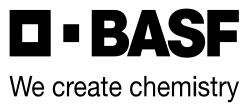Zampro
Group 40 & 45
Zampro® fungicide provides powerful control of late blight and downy mildew that recharges with moisture.
- Multiple modes of action to control downy mildew and late blight
- Prevents initial infection and stops disease spread
- Recharges with moisture when you need it most
Labels & SDS
6 AVAILABLE
Labels & SDS
Benefits of Zampro
Zampro’s two active ingredients attack fungi in distinct ways:
- Ametoctradin is a unique mode of action that disrupts energy production within the mitochondria of fungal cells. Ametoctradin binds rapidly and tightly to the plants’ waxy cuticle, providing a rapidly rainfast barrier to infection.
- Dimethomorph controls disease by rupturing fungal cell walls. Dimethomorph is active at all fungal stages within the life cycle where active growth occurs. Dimethomorph provides Zampro’s anti-sporulant control. Dimethomorph is highly systemic and rainfast within 1 hour.
Product Info & Application Guide
Diseases Controlled
Crop |
Disease |
|---|---|
Blackberries |
Downy mildew (Peronospora sparsa) (suppression) |
Brassica leafy vegetables |
Downy mildew (Peronospora parasitica) |
Bulb vegetables |
Downy mildew (Peronospora destructor) |
Cucurbit vegetables |
Downy mildew (Pseudoperonospora cubensis) |
Fruiting vegetables |
Late blight (Phytophthora infestans) |
Grapes |
Downy mildew (Plasmopara viticola) |
Hops |
Downy mildew (Pseudoperonospora humuli) |
Leafy vegetables |
Downy mildew (Bremia lactucae) |
Potatoes |
Late blight (Phytophthora infestans) |
Spinach |
Downy mildew (Peronospora farinose f. sp. spinaciae) |
Labeled Crops
- Blackberries
- Brassica vegetables
- Bulb vegetables
- Cucurbit vegetables
- Fruiting vegetables
- Grapes
- Hops
- Leafy vegetables
- Potatoes
- Spinach
When to Apply
Crop |
Disease |
Application Timing |
Maximum Sequential Applications |
Maximum Applications per Season |
PHI (Days) |
|---|---|---|---|---|---|
Blackberries |
Downy mildew (suppression) |
Begin applications prior to disease development. Continue on a 5-7 day interval. Use the shorter interval when disease pressure is high. | 2 |
3 |
14 |
Brassica Vegetable Group |
Downy mildew |
Begin applications prior to disease development. Continue on a 7 day interval. |
2 |
3 |
0 (Hand harvesting: 6 days) |
Bulb Vegetable Group |
Downy mildew |
Begin applications prior to disease development. Continue on a 5-7 day interval. Use the shorter interval when disease pressure is high. |
2 |
3 |
0 (Hand harvesting: 1 day) |
Cucurbit Vegetable Group |
Downy mildew Phytophthora blight |
Begin applications prior to disease development. Continue on a 5-7 day interval. Use the shorter interval when disease pressure is high. |
2 |
3 |
1 |
Fruiting Vegetable Group |
Late blight Phytophthora blight (Suppression) |
Begin applications prior to disease development. Continue on a 5-7 day interval. Use the shorter interval when disease pressure is high. |
2 |
3 |
4 |
Grape |
Downy mildew |
Begin applications prior to disease development. Continue on a 7-10 day interval. Use the shorter interval when disease pressure is high. |
2 |
4 |
14 |
Hops |
Downy mildew |
Begin applications prior to disease development. Continue on a 10 day interval. |
2 |
3 |
7 |
Leafy Vegetable Group |
Downy mildew |
Begin applications prior to disease development. |
2 |
3 |
0 (Hand harvesting: 1 day) |
Potatoes |
Late blight Tuber blight (Suppression) |
Begin applications prior to disease development |
2 |
3 |
4 |
Spinach |
Downy mildew |
Begin applications prior to disease development. Continue on a 5-7 day interval. Use the shorter interval when disease pressure is high. | 2 |
3 |
0 |
How Much to Apply
Crop |
Disease |
Rate (L/ha) |
Notes |
|---|---|---|---|
Blackberries |
Downy mildew (suppression) |
0.8-1.0 |
Use the higher rate when disease pressure is high. The addition of a registered non-ionic surfactant is recommended at a rate of 0.125% v/v. |
Brassica Vegetable Group |
Downy mildew |
0.8-1.0
|
Use the higher rate when disease pressure is high. The addition of a spreading/penetrating adjuvant is recommended at a maximum rate of 0.125% v/v. Do NOT use non-ionic surfactants (eg Agral 90). |
Bulb Vegetable Group |
Downy mildew |
1.0 |
The addition of a spreading/penetrating adjuvant is recommended at a maximum rate of 0.125% v/v. |
Cucurbit Vegetable Group |
Downy mildew Phytophthora blight |
0.8-1.0 1.0 |
Use the higher rate when disease pressure is high. The addition of a spreading/penetrating adjuvant is recommended at a maximum rate of 0.125% v/v. |
Fruiting Vegetable Group |
Late blight Phytophthora blight (Suppression) |
1.0 |
The addition of a spreading/penetrating adjuvant is recommended at a maximum rate of 0.125% v/v. |
Grape |
Downy mildew |
0.8-1.0 |
Use the higher rate when disease pressure is high. The addition of a spreading/penetrating adjuvant is recommended at a maximum rate of 0.125% v/v. |
Hops |
Downy mildew |
0.8-1.0 |
Use the higher rate when disease pressure is high. The addition of a spreading/penetrating adjuvant is recommended at a maximum rate of 0.125% v/v. |
Leafy Vegetable Group |
Downy mildew |
1.0 |
Do not apply with an adjuvant. |
Potatoes |
Late blight Tuber blight (Suppression) |
0.8-1.0 1.0 |
Use the higher rate when disease pressure is high. The addition of a spreading/penetrating adjuvant is recommended at a maximum rate of 0.125% v/v. |
Spinach |
Downy mildew |
1.0 |
Do not apply with an adjuvant. |


